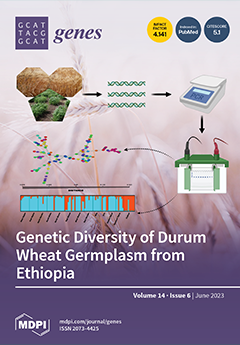Morganella morganii is a Gram-negative opportunistic
Enterobacteriaceae pathogen inherently resistant to colistin. This species causes various clinical and community-acquired infections. This study investigated the virulence factors, resistance mechanisms, functional pathways, and comparative genomic analysis of
M. morganii strain UM869 with 79 publicly available
[...] Read more.
Morganella morganii is a Gram-negative opportunistic
Enterobacteriaceae pathogen inherently resistant to colistin. This species causes various clinical and community-acquired infections. This study investigated the virulence factors, resistance mechanisms, functional pathways, and comparative genomic analysis of
M. morganii strain UM869 with 79 publicly available genomes. The multidrug resistance strain UM869 harbored 65 genes associated with 30 virulence factors, including efflux pump, hemolysin, urease, adherence, toxin, and endotoxin. Additionally, this strain contained 11 genes related to target alteration, antibiotic inactivation, and efflux resistance mechanisms. Further, the comparative genomic study revealed a high genetic relatedness (98.37%) among the genomes, possibly due to the dissemination of genes between adjoining countries. The core proteome of 79 genomes contains the 2692 core, including 2447 single-copy orthologues. Among them, six were associated with resistance to major antibiotic classes manifested through antibiotic target alteration (
PBP3,
gyrB) and antibiotic efflux (
kpnH,
rsmA,
qacG;
rsmA;
CRP). Similarly, 47 core orthologues were annotated to 27 virulence factors. Moreover, mostly core orthologues were mapped to transporters (
n = 576), two-component systems (
n = 148), transcription factors (
n = 117), ribosomes (
n = 114), and quorum sensing (
n = 77). The presence of diversity in serotypes (type 2, 3, 6, 8, and 11) and variation in gene content adds to the pathogenicity, making them more difficult to treat. This study highlights the genetic similarity among the genomes of
M. morganii and their restricted emergence, mostly in Asian countries, in addition to their growing pathogenicity and resistance. However, steps must be taken to undertake large-scale molecular surveillance and to direct suitable therapeutic interventions.
Full article






